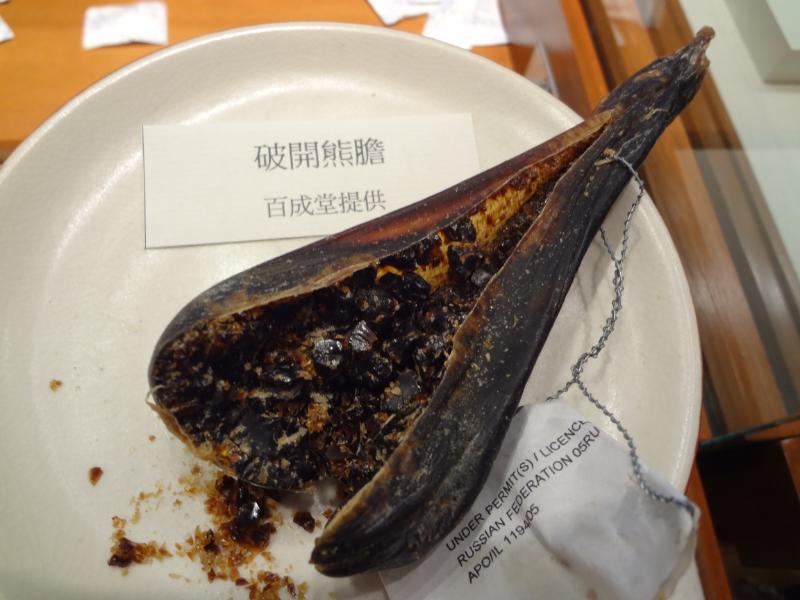Search in medicinals
Ursi Vesica Fellea
Bear’s gallbladder
熊胆 〔熊膽〕 xióng dǎn

Kingdom: Animal
Origin in PRC Pharmacopoeia: Ursus arctos L.; Selenarctos thibetanus G. Cuvier. (PRC Pharmacopoeia)
Origin in unofficial sources: Selenarctos thibetanus G. Cuvier; Ursus arctos L.
Use: Medicinal
Category: Heat-clearing agents / Heat-clearing toxin-resolving agents
Properties: Bitter; cold.
Channel entry: Liver, gallbladder, heart channels.
Actions and indications:
- Clears heat and resolves toxin: Painful swollen
sore s and welling-abscesses, hemorrhoids, or painful swollen throat due to heat toxin. - Extinguishes wind and checks tetany: Fright wind or epilepsy with convulsions when these are due to exuberant liver channel heat with extreme heat engendering wind.
- Clears the liver and brightens the eyes:
Painful red swollen eyes and eye screens due to liver heat.
Dosage and method: Oral: 1–2g for oral consumption. Taken in pills and powders, not in decoctions.
Warnings: Both species of bear used for this medicinal are endangered and protected by CITES law. Furthermore, bear gall is now harvested by draining the gallbladders of caged bears, incurring animal cruelty. The use ofxióng dǎn is therefore strongly discouraged.
Product description: The dried gallbladder is flat and ovate, narrow at the top, and bulbous at the bottom. It is 10–20 cm long and 5–8 cm wide. The outer surface is grayish-black or brown-black, lustrous and with creases. The skin is thin, and looked at against the light, is semitranslucent. This product is hard and when broken open, the interior appears fibrous with a lump of dried bile that is either powdery, pasty, or shiny like amber. It is ground after the outer skin is removed.
Quality: Large gallbladders with shiny yellow bile lumps are the best.
Production area: Hēilóngjiāng and Yúnnán.
Back to search result Previous Next